
Walking your dog is not only a daily routine but also an opportunity to bond and connect with your furry companion. Imagine the joy of exploring the neighborhood together, witnessing the excitement in their wagging tail, and experiencing the health benefits of exercise.
Regular exercise is not just a luxury but a necessity for dogs. It plays a crucial role in maintaining their physical health, mental well-being, and overall behavior. From keeping their weight in check to reducing anxiety and boredom, a consistent exercise routine is the key to a happy and balanced dog. Understanding the importance of exercise for our four-legged friends is the first step towards providing them with the care they truly deserve.
In this article, we aim to provide you with practical guidance and insights to help you determine the optimal dog walking frequency. We’ll explore various factors that influence the frequency, such as breed, age, and energy level, and provide you with guidelines tailored to different stages of your dog’s life. By the end of this article, you’ll have a clear understanding of how often you should walk your dog, ensuring their well-being and creating a deeper bond between you and your loyal companion.
Let’s embark on this journey together and discover the joy of dog walking!
- Factors to Consider When Determining Dog Walking Frequency
- General Guidelines for Dog Walking Frequency
- Signs That Your Dog Needs More or Less Walking
- Balancing Walks with Other Forms of Exercise and Mental Stimulation
- Adjusting Dog Walking Frequency Based on Lifestyle Factors
- Weather and Seasonal Considerations
- Tips for Making Dog Walks Fun and Engaging
- Frequently Asked Questions
- Conclusion
Factors to Consider When Determining Dog Walking Frequency
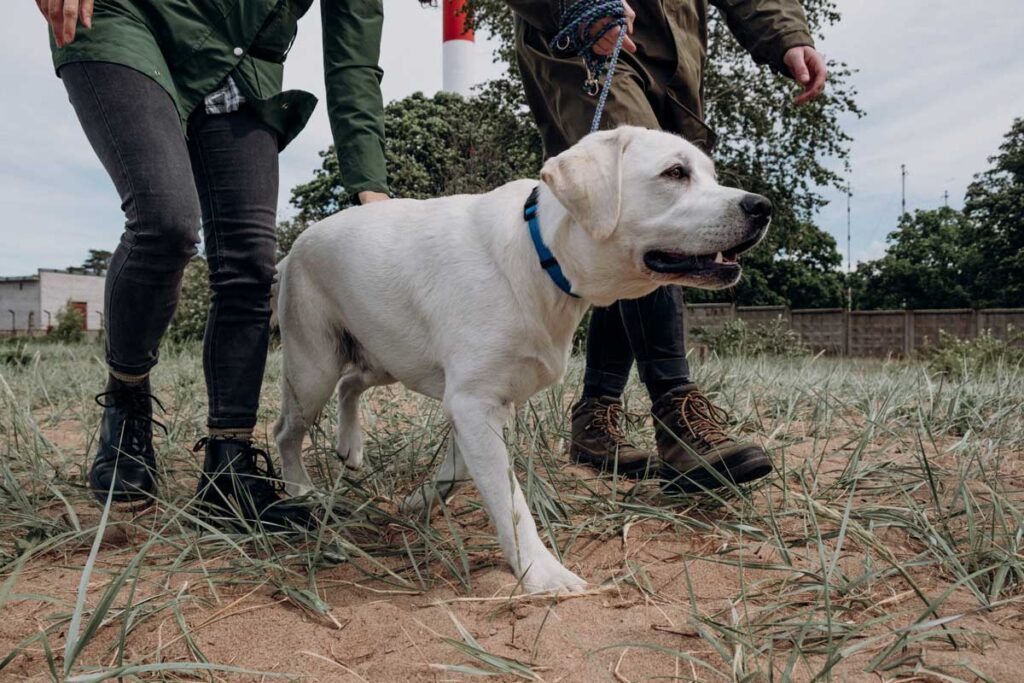
Breed and Size of the Dog
The breed and size of your dog play a significant role in determining their exercise needs. Larger breeds, such as Labrador Retrievers or German Shepherds, generally require more physical activity compared to smaller breeds like Chihuahuas or Pomeranians. Consider the breed’s natural energy levels, exercise requirements, and any breed-specific traits that may influence their walking frequency. It’s important to match the walking routine to your dog’s specific breed and size to ensure they receive adequate exercise.
Age and Energy Level of the Dog
The age and energy level of your dog are crucial factors to consider when establishing their walking frequency. Puppies have developing bodies and shorter attention spans, so frequent short walks throughout the day are recommended. As they grow older, you can gradually increase the duration and intensity of the walks. Adult dogs generally require a daily exercise regimen that suits their energy level, whether they are highly active or more laid-back. Understanding your dog’s age and energy level will help you create a suitable walking schedule.
Health and Physical Limitations of the Dog
Every dog is unique, and their health and physical limitations must be taken into account when determining their walking frequency. Dogs with certain health conditions or physical limitations may require modified exercise routines. Consult with your veterinarian to assess your dog’s health status and any potential restrictions on their physical activities. It’s important to prioritize their well-being and adjust the walking frequency accordingly to avoid overexertion or discomfort.
General Guidelines for Dog Walking Frequency
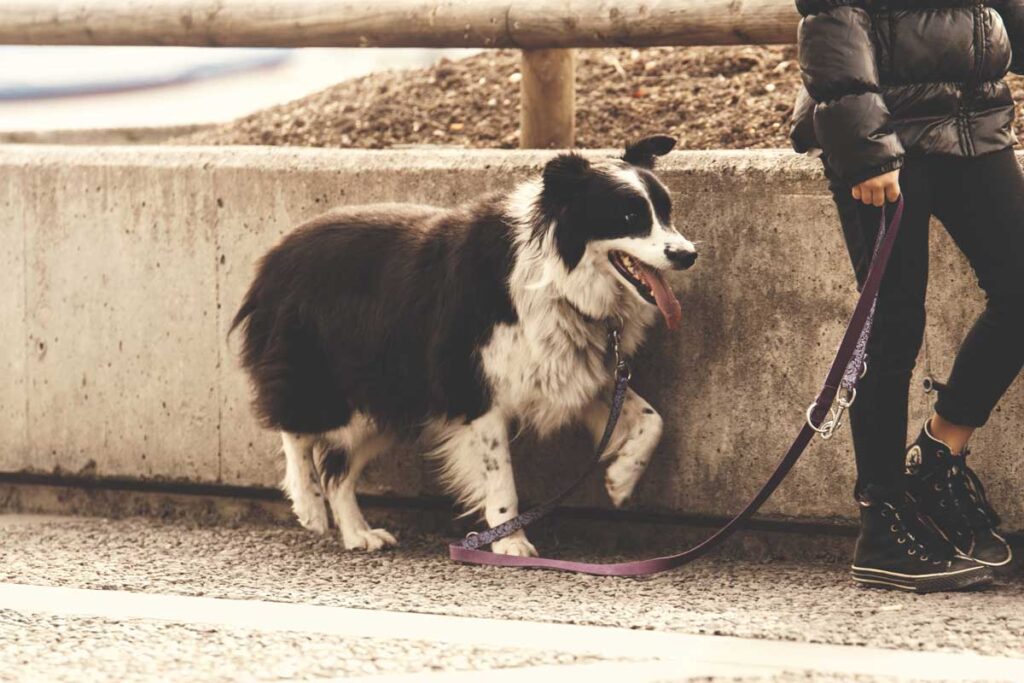
Puppies and Young Dogs
For puppies and young dogs, frequent short walks are crucial for their growth and development. These walks provide opportunities for socialization, exposure to different environments, and mental stimulation. Short walks multiple times a day help prevent boredom and promote proper leash manners. Additionally, they assist in bladder and bowel training, teaching puppies to eliminate outside.
As puppies grow, their stamina and physical abilities improve. It’s important to gradually increase their walking time and distance to prevent overexertion or stress on their developing bodies. Begin with short walks and slowly extend the duration and distance over time. Pay attention to their cues and avoid pushing them beyond their limits.
Adult Dogs
Adult dogs generally require 30 minutes to 1 hour of exercise per day, depending on their breed, size, and energy level. This exercise can include walking, jogging, playing fetch, or engaging in interactive activities. Regular exercise helps maintain a healthy weight, promotes cardiovascular health, and prevents behavioral issues associated with pent-up energy.
Every adult dog has its own energy level, and it’s important to tailor their walking frequency accordingly. High-energy dogs may benefit from more frequent walks or longer exercise sessions, while lower-energy dogs may be content with fewer walks. Observing their behavior and adjusting the walking frequency ensures they receive the appropriate amount of physical activity.
Senior Dogs
Senior dogs have different exercise needs compared to younger dogs. While they still require physical activity, their walking frequency may decrease due to age-related factors. Shorter, more leisurely walks spread throughout the day can be beneficial. Monitoring their comfort levels during walks and adjusting accordingly helps maintain their mobility and joint health.
Senior dogs may face health issues or mobility challenges that affect their walking ability. Arthritis, joint stiffness, or other age-related conditions may require adjustments in walking frequency and intensity. Consulting with a veterinarian helps determine the appropriate exercise regimen and considers any health issues or limitations they may have.
Signs That Your Dog Needs More or Less Walking

Behavioral Indicators of Insufficient Exercise
Dogs are highly active animals, and insufficient exercise can lead to behavioral issues. If your dog displays destructive behavior, excessive barking, restlessness, or hyperactivity indoors, it may indicate a lack of physical and mental stimulation. Increasing their walking frequency can help address these behavioral problems.
Signs of Overexertion or Fatigue
While regular exercise is important, it’s equally crucial to recognize signs of overexertion or fatigue in your dog. Heavy panting, excessive drooling, lagging behind, reluctance to continue walking, or seeking shade or rest are indicators that your dog may be tired or experiencing physical strain. Adjusting the walking duration or intensity can prevent overexertion.
Adjusting Walking Schedule Based on Individual Dog’s Needs
Every dog is unique, and their exercise requirements can vary. Some dogs may thrive with longer walks or more frequent exercise sessions, while others may prefer shorter, more leisurely walks. By observing your dog’s behavior, energy levels, and overall well-being, you can tailor their walking schedule to meet their individual needs.
Balancing Walks with Other Forms of Exercise and Mental Stimulation
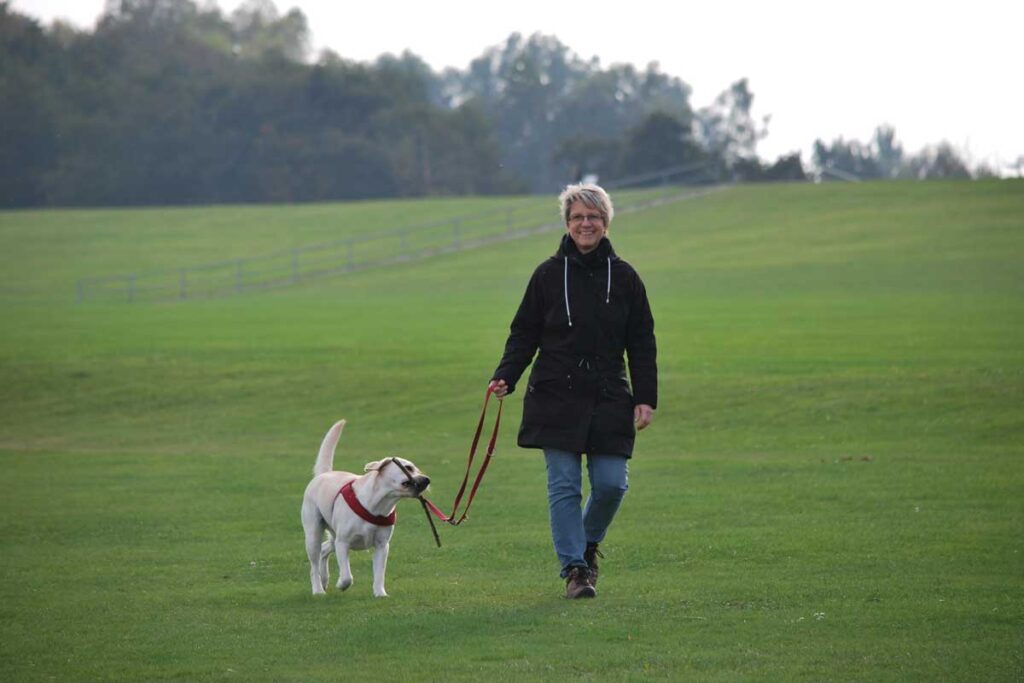
Importance of Variety in Exercise Routine
To keep your dog physically and mentally stimulated, it’s crucial to incorporate a variety of exercises into their routine. Besides regular walks, consider activities like jogging, hiking, or even dog sports like agility or obedience training. This variety challenges different muscle groups, prevents boredom, and promotes overall fitness.
Incorporating Playtime and Enrichment Activities at Home
Playtime and enrichment activities at home are just as important as outdoor exercises. Interactive puzzle toys, tug-of-war, hide-and-seek, or even scent games provide mental stimulation and strengthen the bond with your dog. These activities engage their problem-solving skills, relieve stress, and keep them entertained during inclement weather or when outdoor activities are limited.
Finding the Right Balance for Your Dog’s Overall Well-being
Every dog is unique, so finding the right balance between walks, playtime, and mental stimulation is essential. Observe your dog’s behavior and energy levels to determine their needs. Young and high-energy dogs may require more vigorous exercises, while older or less active dogs may benefit from shorter walks combined with gentle exercises like stretching or swimming. Consulting with a veterinarian or professional dog trainer can provide personalized guidance.
Adjusting Dog Walking Frequency Based on Lifestyle Factors
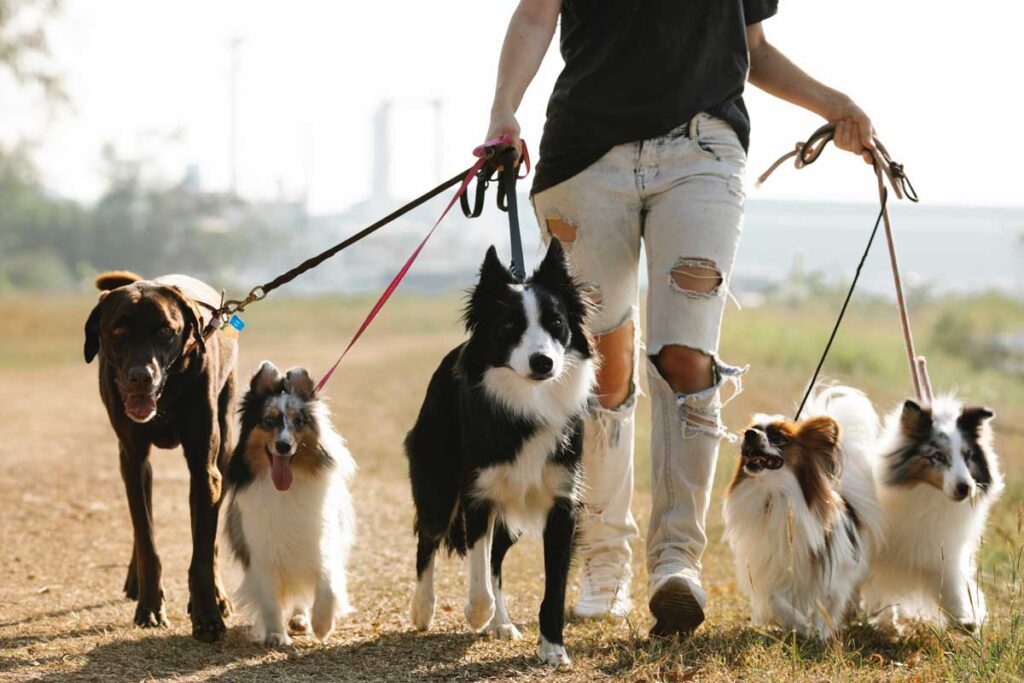
Busy Schedules and Time Constraints
For individuals with busy schedules, finding time for regular dog walks can be challenging. However, it’s important to prioritize your dog’s exercise needs. Consider breaking up walks into shorter sessions throughout the day or hiring a dog walker to assist you. Additionally, incorporating interactive toys or puzzle feeders can provide mental stimulation when time for physical exercise is limited.
Working Dogs and High-Energy Breeds
Working dogs and high-energy breeds require more exercise to satisfy their natural instincts and energy levels. Alongside regular walks, consider engaging them in activities that align with their breed’s characteristics, such as retrieving, herding, or agility training. Interactive toys, like treat-dispensing puzzles, can help channel their mental and physical energy when you’re unable to provide lengthy walks.
Considering Professional Dog Walking Services
If you’re unable to meet your dog’s exercise needs due to work or other commitments, professional dog walking services can be a valuable solution. These services offer personalized walking schedules and can tailor the activities to suit your dog’s requirements. Research local dog walking companies, read reviews, and ensure they are reliable and experienced in handling dogs.
Weather and Seasonal Considerations

Adapting Walks to Different Seasons
Weather conditions can impact your dog’s comfort and safety during walks. In hot weather, opt for early morning or late evening walks to avoid high temperatures. Ensure your dog has access to shade and fresh water. In colder months, protect them with appropriate gear like doggy jackets or booties. Be mindful of icy surfaces and shorter daylight hours.
Safety Precautions in Extreme Weather Conditions
Extreme weather conditions like heatwaves, storms, or icy conditions require additional precautions. Avoid walking your dog during extreme heat or inclement weather. Instead, engage them in indoor activities or provide mental stimulation through training exercises or puzzle toys. Prioritize your dog’s safety and well-being above outdoor walks during hazardous conditions.
Alternatives to Outdoor Walks in Challenging Weather
When weather conditions make outdoor walks challenging, there are alternative ways to keep your dog active and stimulated. Indoor play sessions, obedience training, or teaching new tricks can provide mental stimulation. Consider indoor playdates with other friendly dogs or utilizing indoor dog parks. Interactive games like hide-and-seek or indoor fetch can also keep your dog engaged.
Tips for Making Dog Walks Fun and Engaging
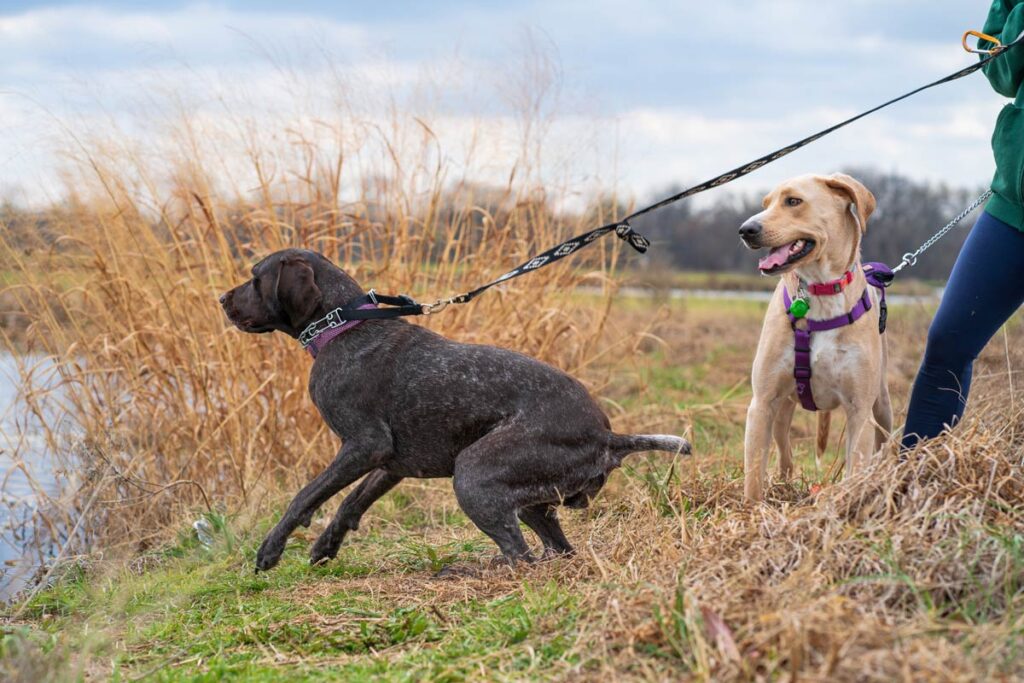
Incorporating Training and Enrichment Exercises
Make your dog’s walks more than just physical exercise by incorporating training and enrichment exercises. Use the opportunity to reinforce basic commands, teach new tricks, or work on obedience skills. Bring along treats or a clicker to reward desired behavior. Additionally, engage your dog’s mind by introducing interactive toys or scent-based activities that encourage exploration and problem-solving.
Exploring New Walking Routes and Environments
Keep your dog’s walks exciting by exploring new walking routes and environments. Discover local parks, nature trails, or dog-friendly beaches in your area. Changing the scenery not only provides mental stimulation but also exposes your dog to different smells, sights, and sounds. Consider incorporating off-leash areas where allowed to allow your dog to explore and socialize in a controlled environment.
Using Interactive Toys and Games during Walks
Enhance your dog’s walking experience by incorporating interactive toys and games. Bring along a frisbee, ball launcher, or rope toy for a game of fetch or tug-of-war during breaks. You can also use treat-dispensing toys to engage your dog’s senses and keep them motivated throughout the walk. These interactive elements will make the walks more enjoyable and rewarding for both you and your dog.
Frequently Asked Questions
How often should I walk my dog?
The frequency of dog walks depends on various factors such as breed, size, age, and energy level. In general, most dogs benefit from at least one walk per day. However, high-energy breeds or younger dogs may require more frequent walks.
Can I walk my dog too much?
While regular exercise is important, it’s essential to avoid overexertion. Dogs have different exercise needs, so it’s crucial to consider their breed, age, and overall health. If you notice signs of fatigue or excessive panting during walks, it might be an indication that you need to adjust the duration or intensity of the walks.
How long should each dog walk be?
The duration of dog walks can vary based on factors such as breed, age, and fitness level. As a general guideline, aim for at least 30 minutes to an hour of exercise per day. However, some dogs may require shorter, more frequent walks, while others may enjoy longer walks or additional playtime.
What if my dog has health issues or physical limitations?
Dogs with health issues or physical limitations may have specific exercise requirements. It’s crucial to consult with your veterinarian to determine the appropriate walking frequency and intensity for your dog. They can provide guidance based on your dog’s specific condition and any necessary modifications.
Should I adjust the walking schedule based on the weather?
Weather conditions should be considered when planning dog walks. Extreme heat, cold, or inclement weather can be uncomfortable and potentially dangerous for dogs. During hot weather, schedule walks during cooler parts of the day and watch for signs of overheating. In cold weather, protect your dog from low temperatures and icy surfaces. Consider alternative indoor activities or provide appropriate gear to ensure your dog’s safety and comfort.
Conclusion
When determining how often to walk your dog, it’s essential to consider factors such as breed, size, age, energy level, and health. Tailoring the frequency and duration of walks to meet your dog’s specific needs is crucial for their overall well-being and happiness.
Regular exercise is vital for maintaining a healthy and happy dog. It not only helps with physical fitness but also contributes to mental stimulation and behavioral well-being. Prioritizing regular walks and engaging activities should be a fundamental part of your dog’s daily routine.
Walking your dog is not only a responsibility but also an opportunity for bonding and enjoying quality time together. It provides an avenue for exploring the world, meeting new friends, and strengthening the human-dog connection. Embrace the benefits of walking your dog and cherish the precious moments shared during these walks. Remember, a happy dog makes for a happy and fulfilled pet owner.
By considering these tips and reflecting on the importance of dog walking frequency, you can ensure that your furry companion receives the exercise, mental stimulation, and joy they need for a healthy and fulfilling life. So grab the leash, put on your walking shoes, and embark on countless adventures with your beloved dog.
Read more:


















































